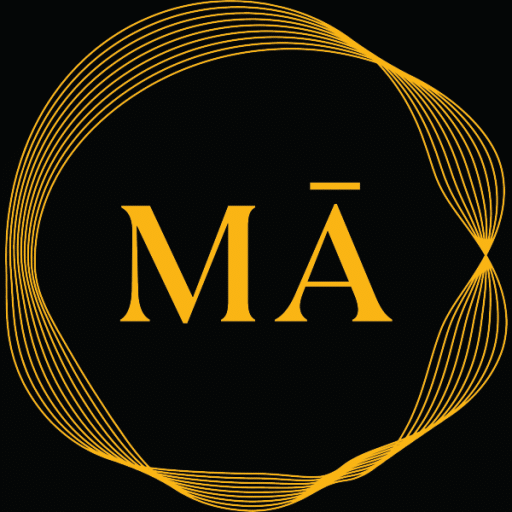MĀ Wellness
Acupuncture Victoria
Downtown Victoria Wellness Clinic
Acupuncture Victoria BC
Welcome to MA Wellness and Yoga, your haven for holistic healing and acupuncture in the heart of Victoria, BC. If you’re seeking natural and effective solutions to enhance your well-being, our experienced acupuncture practitioners are here to guide you on your journey to optimal health. With a focus on personalized care and a deep understanding of the body’s energy systems, we invite you to explore the benefits of acupuncture at our Victoria-based clinic.
Book an Acupuncture Treatment
Experience Holistic Healing with Acupuncture in Victoria, BC
Acupuncture uses a traditional method of moving the energy within the body to create an internal sense of harmony and well being. This method has been perfected within China and has heavily influenced many other systems of medicine throughout the ages. Through the use of inserting acupuncture needles, moxibustion, gua sha massage, and cupping therapy, excesses and deficiencies within our systems are addressed, pulling on our bodies ability to heal itself and sustain life.
Traditional Chinese Medicine Treatments Victoria BC
Our Approach:
At MA Wellness and Yoga, we believe in the power of holistic healing. Our licensed acupuncturists combine ancient wisdom with modern techniques to create a unique and tailored experience for each individual. Acupuncture is based on the principle of restoring the body’s balance by stimulating specific points along energy pathways, known as meridians. By promoting the flow of Qi (life force energy), acupuncture addresses a wide range of physical, emotional, and mental imbalances.
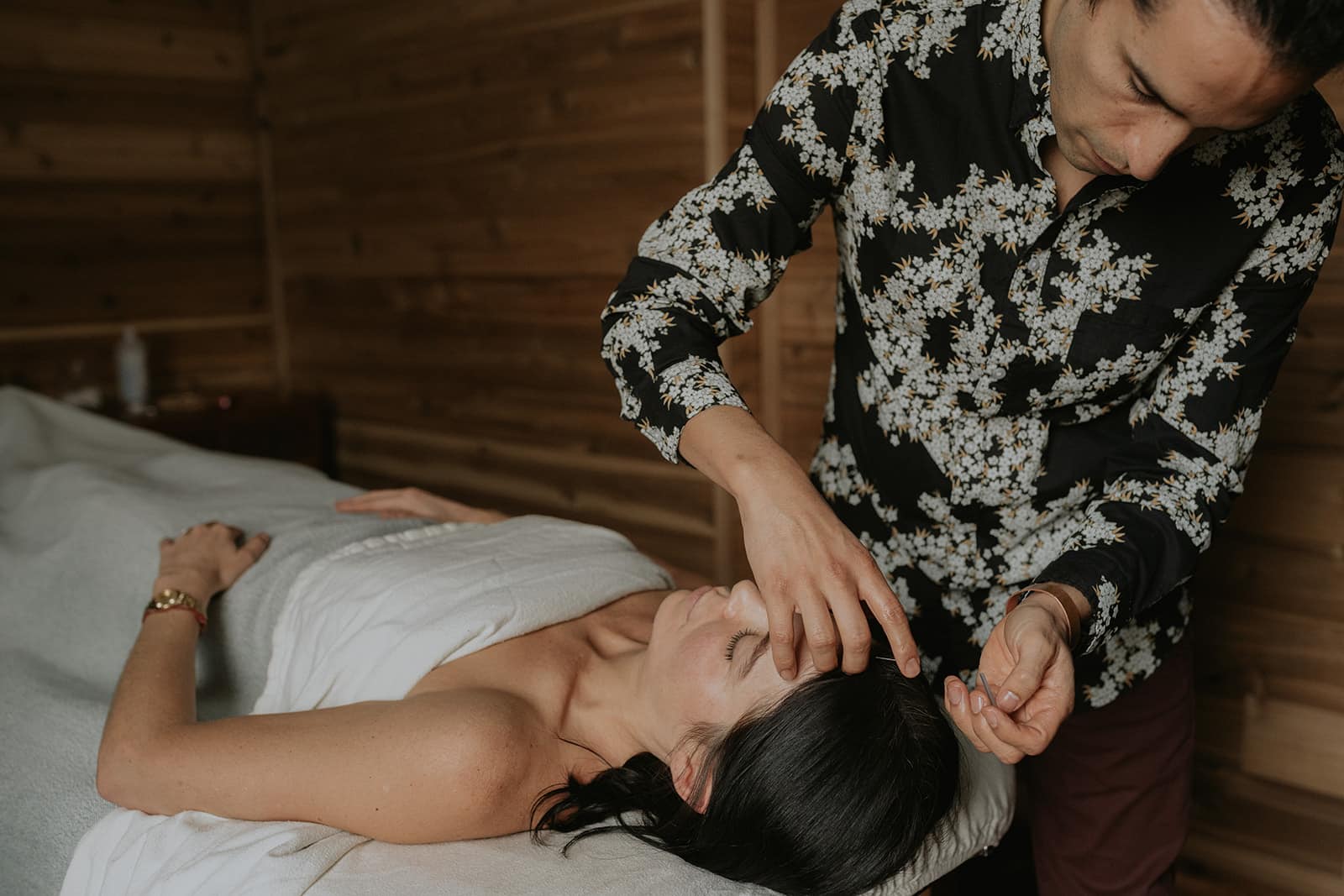
Why Choose Acupuncture:
Natural Healing:
Acupuncture is a drug-free and non-invasive therapy that encourages the body’s innate ability to heal itself. Whether you’re dealing with pain, stress, insomnia, or other health concerns, acupuncture offers a gentle and effective approach.
Personalized Care:
Our practitioners take the time to understand your unique health history, concerns, and goals. This personalized approach ensures that each acupuncture session is tailored to your specific needs, promoting optimal results.
Comprehensive Benefits:
Acupuncture is known to provide relief for a myriad of conditions, including but not limited to pain management, anxiety, fertility support, digestive issues, and migraines. By addressing the root causes of these issues, acupuncture offers lasting and holistic healing.
Our Expert Practitioners:
MA Wellness and Yoga boasts a team of highly skilled and certified acupuncturists who are dedicated to helping you achieve your wellness goals. With years of experience, our practitioners blend traditional acupuncture techniques with a deep understanding of modern health science, ensuring that you receive the highest standard of care.
Visit Our Victoria Acupuncture Clinic:
Experience the serene and welcoming environment of our Victoria-based acupuncture clinic. Nestled above Dragon Alley in Chinatown Victoria, our clinic provides a peaceful oasis where you can embark on your healing journey. Our inviting space and expert practitioners create the perfect setting for relaxation, rejuvenation, and transformation. Ready to experience the benefits of acupuncture in Victoria, BC? Take the first step towards holistic healing by booking an appointment at MA Wellness and Yoga.
Book With Us Today
Let our skilled acupuncturists guide you on the path to wellness and balance. Discover the profound impact of acupuncture on your overall well-being. Through personalized care, ancient wisdom, and modern expertise, we are committed to helping you achieve optimal health naturally. Take the leap towards holistic healing and book your acupuncture session today.
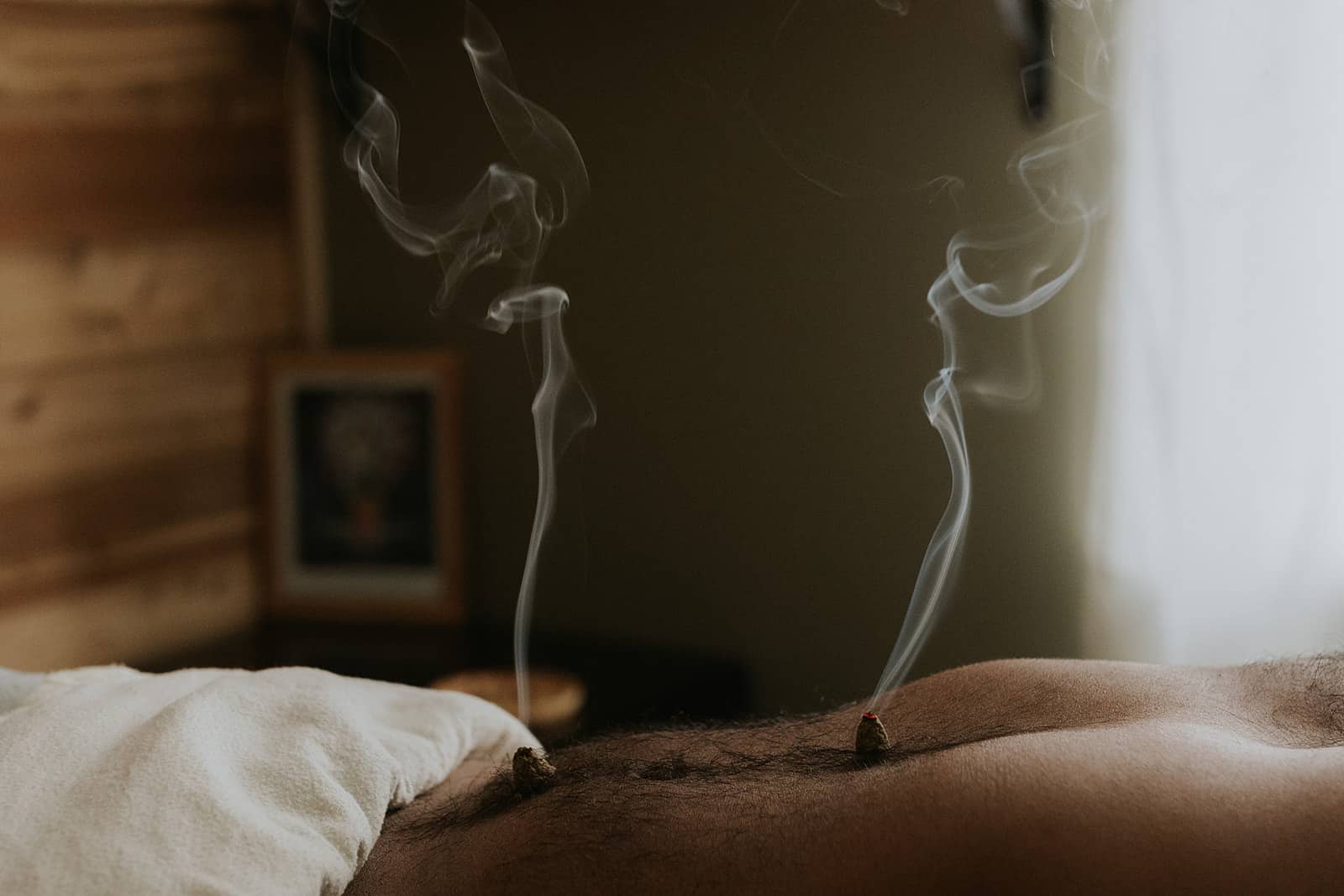
Chinese Cupping
Gua Sha
Moxibustion
Acupuncture Pricing
Single Treatments
Choose from one of our single treatment options below. If this is your first time at our acupuncture clinic, please select the initial consultation when booking your appointment.
Acupuncture Initial Consultation
$150
Acupuncture 60 minutes
$120
Acupuncture with herbal medicine
$130
*Herbs sold separately
Book an Acupuncture Treatment
Meet Our Practitioners
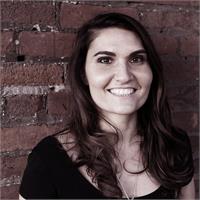
KATYANNA RYAN (SHE/HER)
Katyanna studied acupuncture and herbal medicine at Pacific Rim College, earning her diploma in 2017. The lens of Taoism has changed the way she looks at the world and she finds it fascinating to see disharmony displayed in such a dynamic map.
Show More
Specialized Expertise in Holistic Health
With a keen focus on holistic healing, she specializes in treating musculoskeletal injuries, sleep disorders, stress management, and digestive health issues. Her approach combines traditional medicine with contemporary practices to offer comprehensive care for both physical and mental well-being.
Integrating Movement Practices for Deeper Healing
Leveraging her extensive 15-year background in movement practices, she brings a unique perspective to understanding and treating the root causes of disharmony. This expertise allows her to guide patients in remapping their movement patterns, leading to more profound and sustainable healing outcomes. Her methods are especially effective in addressing chronic pain, enhancing mobility, and improving overall quality of life.
Personalized Care Approach
Believing in the uniqueness of each individual’s journey, she tailors her treatments to meet the specific needs and experiences of her patients. This personalized approach ensures that each patient receives care that is not only effective but also respectful and empathetic to their personal health journey.
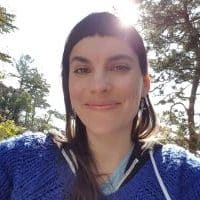
JENICA GEISLER, R.Ac (SHE/HER)
Jenica (she/her) completed her diploma in Doctorate studies of Traditional Chinese Medicine at the Kootenay Columbia College of Integrative Health Sciences in 2012. She began practicing as a Community Acupuncturist shortly after, which inspired her to use her skillset for positive social and cultural change.
Show More
Private Practice Locations
Currently, Jenica holds a private practice in Victoria on the lands of the Unceeded Coast Salish Territory as well as in Quw’utsun, the Cowichan Valley, on the lands of the Hul’q’umi’num Coast Salish Peoples.
Clinical Assistant Role
In addition to her private practice, Jenica works as a clinical assistant for Alaine Duncan’s Tao of Trauma virtual year-long certification program, which integrates theoretical and clinical concepts from Western Neuroscience with the Five Elements of Chinese Medicine in support of treating trauma survivors.
Philosophy and Approach
In her practice, Jenica advocates for our innate individual and collective capacity for healing and she views her role as a facilitator to support the healing of her patients. She values that each patient is an expert of their own experience, body, and needs and she strives to compassionately hold a non-judgemental space and work together with her patients to heal.
More Information
To find out more, please visit: https://www.passagewellness.com/about-jenica
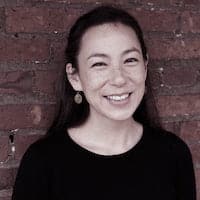
MARIKO IBARAKI, R.Ac (SHE/HER)
Mariko first approached Chinese Medicine with a passion for learning and a deep curiosity of energetics. Since then, she has been intrigued, moved and shaped by the profound wisdom of Eastern philosophy and is continually fascinated by its application to human physiology.
Show More
Client-Centered Approach
She enjoys finding connections within clients’ stories which can help them create more ease in their lives, emphasizing a personalized and empathetic approach to wellness.
Professional Qualifications
Mariko earned a diploma of Acupuncture in 2015 and has been practicing as an Acupuncturist since 2016. Her commitment to continuous learning led her to further her studies and earn a Doctor of Chinese Medicine diploma in 2018. She is now proudly registered as a Traditional Chinese Medicine Practitioner, bringing a wealth of knowledge and experience to her practice.
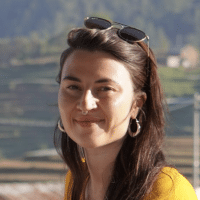
SARAH DUNN, R.Ac (SHE/HER)
Sarah is a dedicated practitioner of Acupuncture and Traditional Chinese Medicine (TCM) who embraces holistic healthcare with humility. Her journey includes extensive clinical experience gained while volunteering with the Acupuncture Relief Project in Nepal, where she provided acupuncture treatment to 12-20 patients daily. This experience reflects her deep dedication to making a positive impact on underserved communities, both locally and internationally.
Show More
Education and Experience
Her diploma from Pacific Rim College in 2022 encompasses over 2200 hours of comprehensive studies in acupuncture, herbal medicine, nutrition, and biomedicine, complemented by 700+ hours of clinical practice.
Chinese Herbal Medicine Expertise
Drawing upon ancient and wise Chinese herbal formulas, Sarah has honed her expertise in crafting unique herbal remedies for each individual, gently reminding the body of its innate healing abilities.
Specializations
Her skills extend to internal medicine, digestive health, musculoskeletal conditions, and gynecological issues, always seeking the most effective holistic solutions for her patients.
Compassionate Care
Her modest and compassionate approach extends to addressing emotional well-being, stress management, and ensuring that patients feel supported on their healing journey.
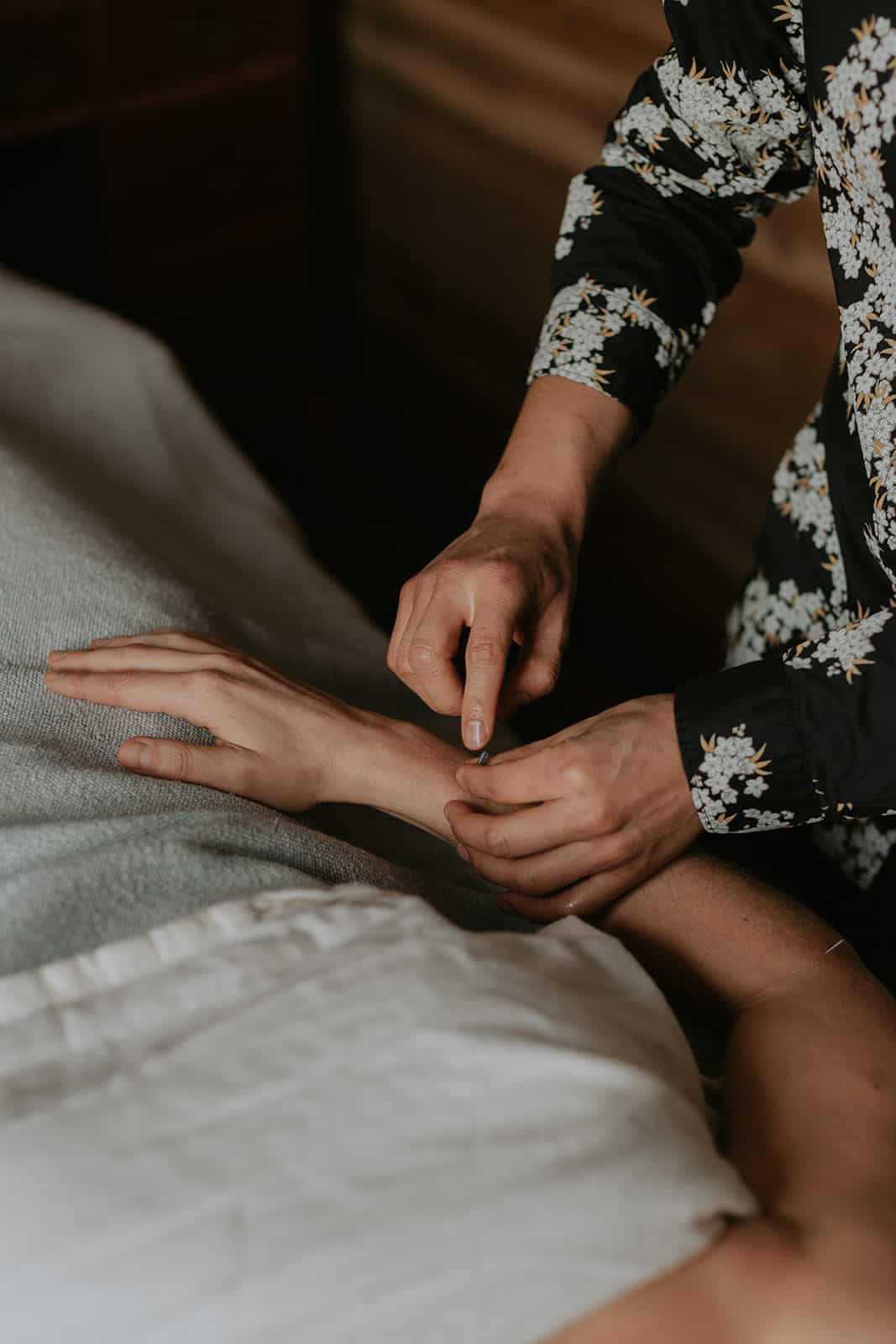
Frequently Asked Questions
Late Cancellation Policy and Fees
Appointment Cancellation and Modification Policy
At MĀ Wellness and Yoga, we strive to offer efficient services and honour the valuable time of our practitioners. To achieve this, we respectfully request a minimum notice of 24 hours for any cancellations or changes to your appointment. This policy ensures that we can continue to provide high-quality care to all our patients.
Cancellation Fees Explained:
- Late Cancellation Fee: Should you need to cancel your appointment less than 24 hours before its scheduled time, we will charge a fee equal to 100% of the treatment cost to your card on file. This fee compensates for the time that had been reserved for you.
- Emergency Situations: We understand that unforeseen circumstances can arise. In cases of emergency, please inform us immediately. For appointments cancelled due to emergencies within 24 hours of the scheduled time, a reduced fee of 50% of the treatment cost will be charged to your card on file.
We sincerely appreciate your understanding and cooperation with this policy. By adhering to these guidelines, you help us maintain a high standard of service for all our patients.
Thank you for your attention to these matters, and for helping us serve you better.
How does Acupuncture Work?
Acupuncture, originating in China over 2,500 years ago, is a therapeutic practice designed to maintain health and harmony within the body. In Victoria, our acupuncture clinic continues this lineage, fusing ancient wisdom with contemporary understanding to address a variety of health concerns.
Understanding Qi and Meridians: The Foundation of Acupuncture Victoria
The Concept of Meridians in Acupuncture
Picture your body as a network of rivers, all interconnected and working in unison. These rivers, or meridians as they are known in acupuncture, are pathways carrying ‘qi’, the life force vital to overall health. Our Acupuncture Victoria specialists view these meridians as integral to sustaining and distributing life energy throughout the body.
Understanding Qi and Body Imbalance
When illness, discomfort or pain arises, it often indicates that the flow of ‘qi’ has been disrupted. Blocked, deficient, or excessive ‘qi’ in the meridians can lead to physical symptoms such as pain, fatigue, or imbalance. Much like a river can overflow or dry up, affecting the surrounding ecosystem, these imbalances can affect the overall harmony of the body.
Exploring Acupuncture’s Effectiveness in Pain Management
We are excited to present a thorough analysis of how acupuncture can significantly alleviate chronic pain. Our latest article provides an in-depth look into the ancient practice of acupuncture, emphasizing its pivotal role in traditional Chinese medicine and its scientifically-backed efficacy in treating a variety of pain conditions, including chronic back pain, arthritis, and migraines. Learn more about acupuncture’s role in pain management.
Acupuncture and Fertility
Acupuncture, a cornerstone of Traditional Chinese Medicine (TCM), offers a holistic approach to enhancing fertility, revered for centuries for its potential to balance the body’s energies. By targeting specific meridians, acupuncture aims to optimize reproductive health, addressing both the physical and emotional aspects of fertility. It’s believed to regulate hormonal imbalances, improve blood flow to reproductive organs, and reduce stress—a known barrier to conception. This ancient practice harmoniously complements modern fertility treatments, such as IVF, by potentially increasing success rates and promoting overall well-being. Embracing acupuncture for fertility invites a journey towards balanced health, offering a natural pathway to achieving reproductive goals. With each needle placement, acupuncture taps into the body’s innate healing ability, fostering an environment conducive to conception and nurturing the dream of parenthood.
The Holistic Benefits of Acupuncture
Discover the holistic benefits of acupuncture in our detailed article. It sheds light on the therapy’s neurophysiological impact, anti-inflammatory effects, and its ability to improve blood circulation, contributing to enhanced overall health. The article also explores how acupuncture offers a comprehensive approach to pain relief, tapping into the body’s natural healing mechanisms.
Customized Acupuncture Treatments for Minimal Side Effects
Our exploration further discusses acupuncture’s minimal side effects and the adaptability of treatments through personalized care plans. This makes acupuncture an excellent choice for those seeking alternative methods for managing pain. Dive into our article to gain a deeper understanding of the extensive potential acupuncture holds in the realm of pain therapy. Explore the full article here.
The Role of Acupuncture in Restoring Balance
Restoring Qi Balance with Acupuncture in Victoria
Acupuncture Victoria plays a crucial role in rebalancing your body’s ‘qi’. By using small, precisely placed needles, our acupuncture techniques aim to restore harmony and balance. This strategic needle placement is akin to creating guiding signposts in the body, helping to steer your ‘qi’ back to its natural, optimal flow.
Modern Research Backing Acupuncture
Our understanding and practice of acupuncture are bolstered by contemporary scientific research. Emerging studies indicate that acupuncture needle insertion can activate the body’s own communication systems. This stimulation affects nerves, muscles, connective tissues, and even the immune system, showcasing acupuncture’s wide-ranging impact on overall health.
Expert Acupuncture Care at Our Victoria Clinic
At our Victoria Acupuncture clinic, we leverage this extensive research and understanding to offer treatments tailored to restoring and enhancing your wellbeing. Our team is dedicated to applying these intricate techniques to offer effective and holistic care for our patients.

What to Expect From Our Acupuncture Clinic
At our acupuncture clinic in Victoria, BC, you’ll find expert care tailored to your specific health needs. Our licensed practitioners specialize in delivering effective acupuncture treatments for pain relief, stress management, and overall wellness. We begin with a detailed health assessment to create a targeted treatment plan just for you. Our approach combines traditional techniques with the latest research to ensure the best outcomes. Expect a professional, supportive environment focused on achieving your health goals and enhancing your quality of life.
What kind of Conditions Does Acupuncture Treat?
Many people seek acupuncture for pain relief, but it can be used to treat so many other conditions. Acupuncture really shines in treating reproductive issues, migraines, insomnia, musculoskeletal conditions, as well as anxiety and depression.
This medicine seeks to harmonize the deeper currents in our body that help to sustain us. Acupuncture can be used to rebalance a range of conditions.
How many treatments will I need?
It is important to talk to your practitioner about your treatment plan. More acute phases of illness and discomfort may clear very quickly in only a few treatments. Some longer standing disharmonies may require more aggressive treatment such as 1-2 times aweek for a period of time before the qi can move freely. Each condition is unique, and the longer a patient has had a condition, the longer the treatment plan.
Does it hurt?
The insertion of needles in the body can seem like a strange way of seeking health at first glance , but acupuncture can be a deeply relaxing experience that causes very little discomfort, if any. If it is your first time, your acupuncturists can be really sensitive about choosing points that have less sensation and easing you into the process. Our patients look forward to their visits and the amazing results they see through treatment.
Are there any side effects?
The most common side effect of acupuncture is bruising. In fact, some treatments like fire cupping create bruising in order to mount an immune response to a certain stagnant area of your body. The bruising will normally subside in 3-5 days.
Some points may release a small amount of blood and be a bit sore the next day. Many forms of orthopaedic needling done for musculoskeletal pain, can make your muscles feel quite sore the next day. This is all part of the healing process.
What should I do after treatment?
After receiving acupuncture, make sure to drink plenty of water. This will facilitate the movement of qi in the body and create a more lubricated pathway. Try to take it easy so you can allow the energy in your body to settle and flow with the energetic tune up you received. Your practitioner will give you guidelines that are unique to you after you finish so you can be sure you’re helping the treatment along after you leave the acupuncture clinic.
